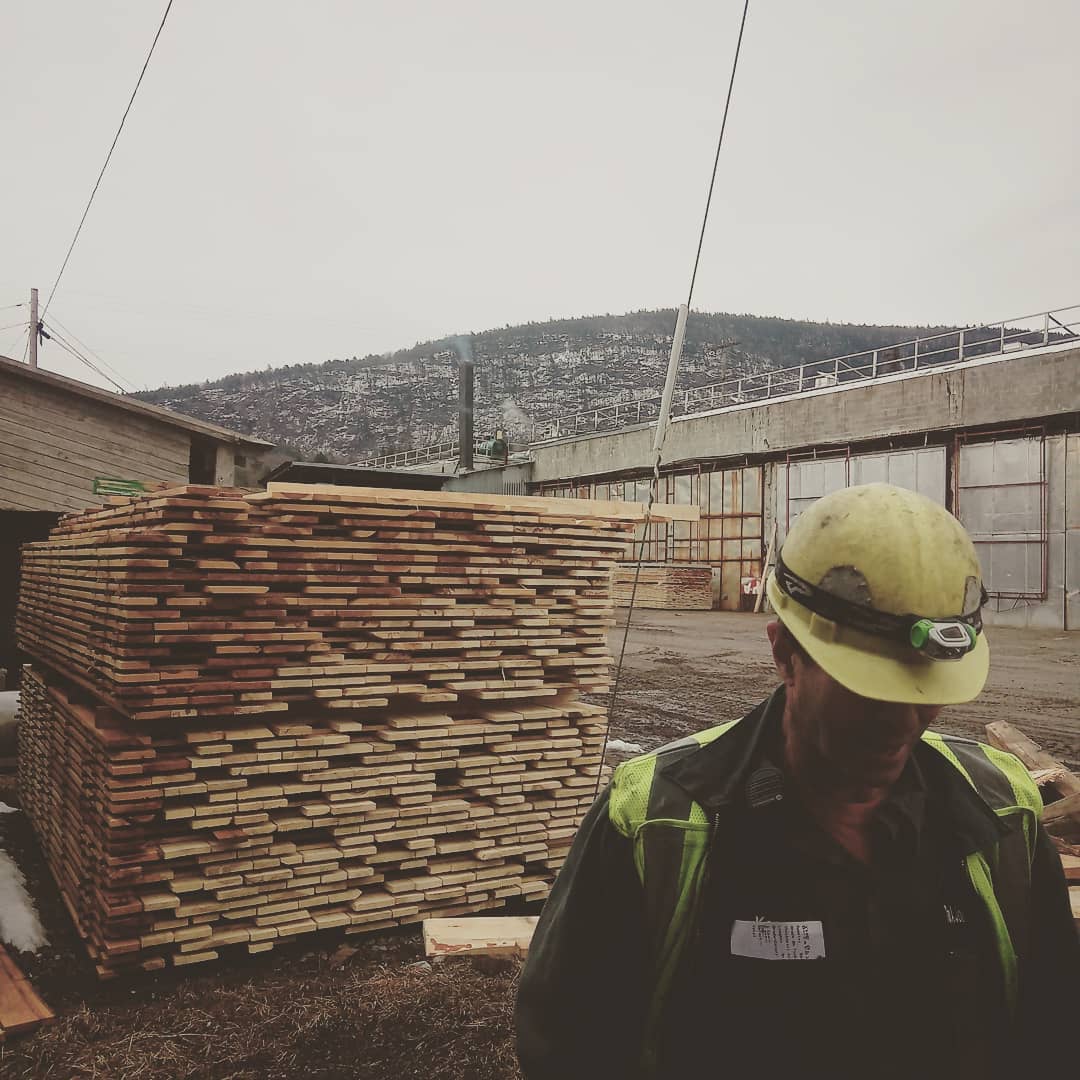October 2025 Market Report: Lumber Markets Face Perfect Storm
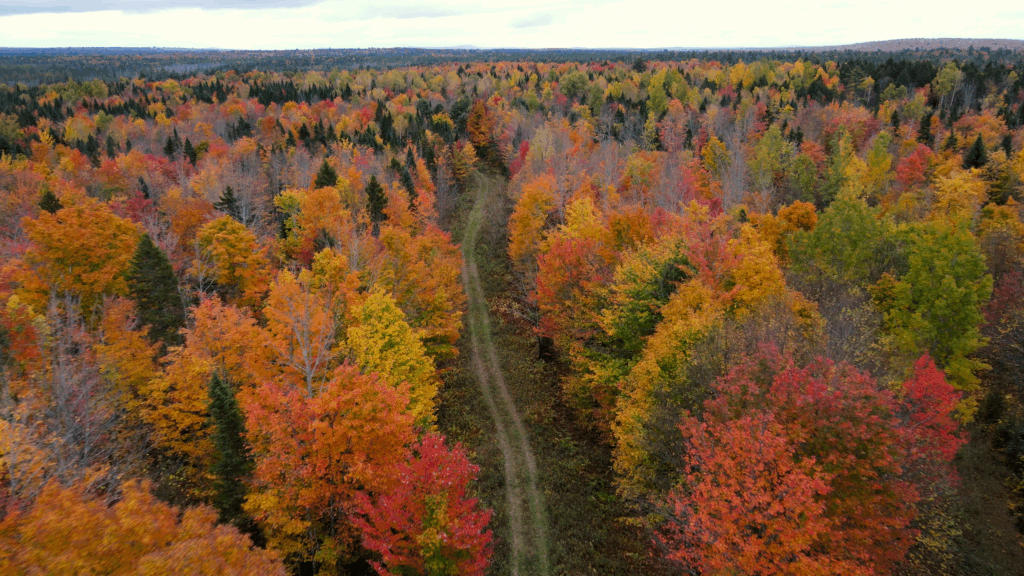
The North American lumber market entered a critical inflection point in October 2025 as combined tariffs exceeding 45% on Canadian softwood lumber collided with aggressive production curtailments and recovering prices. After months of weakness, lumber futures climbed to $610 per thousand board feet by October 20, up 16.18% year-over-year, while the Madison’s Lumber Index surged 7% in a single week to reach $523 per thousand board feet by mid-month. This dramatic reversal comes as the industry confronts the October 14 implementation of new Section 232 tariffs, an $8.2 billion mega-merger between Rayonier and PotlatchDeltic, and the most severe supply constraints since 2019—all while housing demand remains muted by mortgage rates stubbornly anchored above 6%.
The convergence of these factors creates unprecedented uncertainty for industry participants. Canadian producers face existential threats from compounding duties, U.S. mills operate at just 64% capacity despite tight supplies, and homebuilders brace for additional cost pressures that could add $9,200 to $10,900 to average new home prices. Yet beneath the turbulence lies a structural housing shortage of 4.5 million units and pent-up millennial demand waiting for rate relief, setting the stage for what analysts predict could be a 16% price surge through 2026.
October Pricing Surge Breaks Seasonal Patterns
Lumber prices defied typical autumn weakness throughout October 2025, with multiple benchmarks showing significant gains. The Madison’s Lumber Index, tracking a species mix including Western Spruce-Pine-Fir, Eastern SPF, Douglas Fir, and Hem-Fir, climbed from $485 per thousand board feet on October 3 to $490 on October 10, then accelerated sharply to $523 by October 17—a 7% weekly jump that marked the strongest momentum since spring. This 10% month-over-month increase reversed summer declines when prices had slumped to their lowest levels in over a year.
CME lumber futures traded at $610 per thousand board feet on October 20, up 7.21% for the month despite a 3.79% pullback from the previous session. Year-over-year comparisons reveal even more dramatic gains, with futures up 16.18% compared to October 2024. The Gordian RSMeans national average registered $903.14 per thousand board feet for October, representing a 12.71% year-over-year increase even as it showed the first quarterly decline since Q4 2024, down 3.52% from summer peaks.
Benchmark species pricing provided additional market color. Western SPF 2×4 #2&Better traded at $410 per thousand board feet in mid-September, matching 2023 levels exactly in what Madison’s Lumber Reporter publisher Keta Kosman initially described as market stabilization. Retail pricing for common framing lumber in October showed SPF 2×4 8-foot premium studs at $5.08 per piece, while Hem-Fir equivalents sold for $4.38. The price acceleration caught many buyers off-guard, particularly those who had adopted just-in-time purchasing strategies to avoid inventory risk.
Structural panel markets told a more nuanced story. OSB prices in September hovered around $494 per thousand square feet for North-Central benchmarks, with 7/16-inch sheathing fluctuating between $300 and $500 depending on region. Retail OSB sheets ranged from $32 to $77 based on thickness and application, averaging roughly $50 for standard 4×8 sheets. Plywood demonstrated greater stability, with the Western Fir composite at $950 per thousand square feet in late September, relatively unchanged week-over-week, while Southern Yellow Pine plywood edged down 1.3%.
New Tariff Regime Reshapes Competitive Landscape

October 14, 2025, marked a watershed moment as the Trump administration’s Section 232 tariffs on timber and lumber products took effect, imposing a 10% global tariff on softwood lumber based on national security concerns. This new levy compounds existing trade barriers in unprecedented fashion. Canadian softwood lumber already faced anti-dumping duties averaging 20.56% and countervailing duties of 14.63%—rates that more than doubled from earlier in the year following the Commerce Department’s sixth administrative review completed in July and August 2025.
The arithmetic is punishing: total effective tariff rates on Canadian lumber now exceed 45%, with some individual producers facing even higher burdens. Canfor Corporation received a combined AD/CVD rate of 46.48%, while West Fraser Mills—with rates of 9.48% for anti-dumping and 16.57% for countervailing duties—enjoys the industry’s lowest combined burden at 26.05% but still faces significant competitive disadvantages. The Section 232 tariffs extend beyond lumber to include 25% levies on kitchen cabinets and vanities, escalating to 50% on January 1, 2026, alongside 25% tariffs on upholstered wooden furniture rising to 30%.
The National Association of Home Builders condemned the escalation as creating “additional headwinds for an already challenged housing market,” noting the U.S. imports roughly one-third of consumed lumber because domestic production falls short by approximately 15 billion board feet annually. NAHB estimates the tariffs could raise average new home costs by $9,200 to $10,900, while Yale Budget Lab projects overall price levels will rise 1.7% with average household losses of $2,800. NAHB Chairman Buddy Hughes emphasized that U.S. sawmills operate at just 64% capacity, making rapid domestic expansion unrealistic: “It will take years until domestic lumber production ramps up to meet the needs of our citizens.”
Canadian industry representatives and provincial leaders have intensified calls for federal intervention. British Columbia’s Premier and forest industry leaders demanded Ottawa treat lumber tariffs as a national priority, with producers noting they’ve paid $3.9 billion in duties since the dispute reignited, including $2 billion from BC mills alone. In September 2025, Prime Minister Carney’s government made the strategic decision to withdraw certain WTO challenges against U.S. duties as part of efforts to negotiate a broader trade agreement, though lumber remains a contentious sticking point. Federal Minister Joly indicated relief measures are forthcoming for Canadian producers facing what Thunder Bay Chamber of Commerce President Charla Robinson called harm to “businesses on both sides of the border.”
World Trade Organization rulings have consistently favored Canada’s position, with an August 2020 panel finding 40 instances where U.S. subsidy claims were not substantiated and determining the Commerce Department’s stumpage price analysis inconsistent with WTO rules. However, U.S. blocking of new WTO Appellate Body appointments has prevented effective appeals processes, leaving Canada with limited recourse despite favorable rulings. CUSMA/USMCA Chapter 10 binational panels issued mixed decisions in 2025, with Canada withdrawing some challenges in September as part of Carney’s negotiation strategy.
Production Capacity Shrinks as Mills Shutter Operations
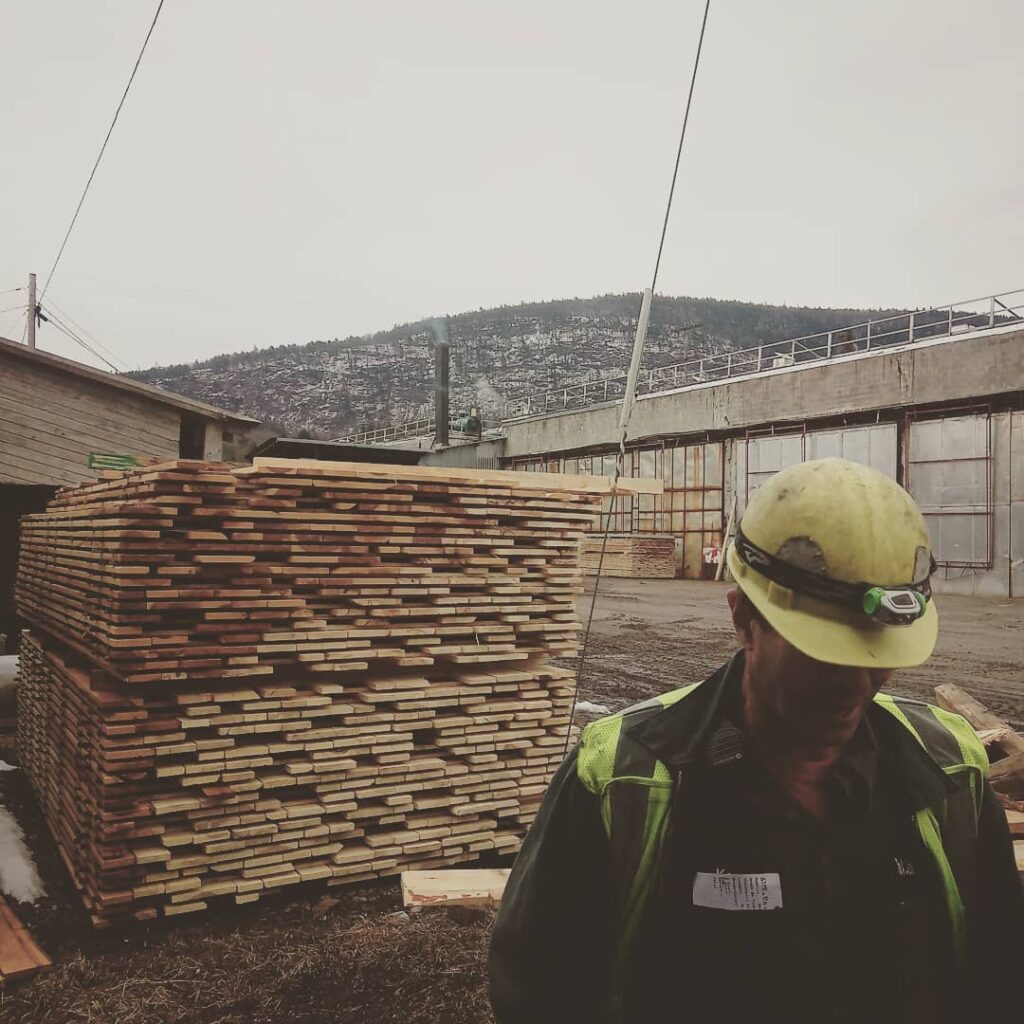
The North American lumber industry experienced accelerating capacity reductions through 2024 and into 2025, with over 3 billion board feet of production capacity eliminated in 2024 alone following nearly 2 billion board feet shuttered in 2023. This 7% reduction in the industry’s capacity base over two years reflects both cyclical demand weakness and structural challenges from tariffs, fiber constraints, and unsustainable pricing.
Interfor Corporation announced on October 17, 2025, that it would curtail 250 million board feet in Q4 2025—approximately 26% below Q2 production levels—split evenly between Canadian and U.S. operations. CEO Ian Fillinger explained that “lumber prices in all regions have continued to weaken from already unsustainably low levels,” forcing the company to match production with deteriorating demand. This followed earlier 2025 curtailments by major producers including Canfor’s closure of two British Columbia mills and southern U.S. facilities, eliminating an estimated 670 million board feet of annual capacity.
GreenFirst Forest Products implemented temporary curtailments at its Kapuskasing, Hearst, and Cochrane sawmills in Ontario during October, impacting approximately 2,500 direct, indirect, and induced jobs when combined with the Kap Paper mill shutdown. In South Carolina, Canfor permanently closed its Darlington and Estill sawmills, eliminating 290 jobs total, citing “persistently weak market conditions and sustained financial losses” after suffering a $942 million operating loss in 2024 and $29 million in Q1 2025 alone.
U.S. lumber production in the first half of 2024 totaled 18,351 million board feet, down 3.2% year-over-year, with capacity utilization rates falling to 77% compared to 87% in 2018. Canadian production showed modest growth at 10,741 million board feet in H1 2024, up 4.6% as Quebec and Alberta offset British Columbia’s 4% decline. However, sawmill employment dropped to 89,000 in Q4 2024—the lowest since 2021—while plant hours averaged just 47.9 hours per week in Q1 before rising to 57.7 in Q2, both well below full-capacity operations.
The combination of reduced production and falling imports created the tightest supply conditions since 2019. Total lumber available for U.S. consumption dropped sharply in Q1 2025, with U.S. production of 9.1 billion board feet (down 2.1%) and imports declining 5.1% to 3.4 billion board feet. Canadian imports specifically fell 6.5% to 2.8 billion board feet as tariff uncertainties and mill closures constrained cross-border shipments. This supply squeeze, combined with just-in-time buying behavior that eliminated dealer inventory buffers, set the stage for October’s sharp price increases.
Housing Market Shows Tentative Improvement Despite Constraints
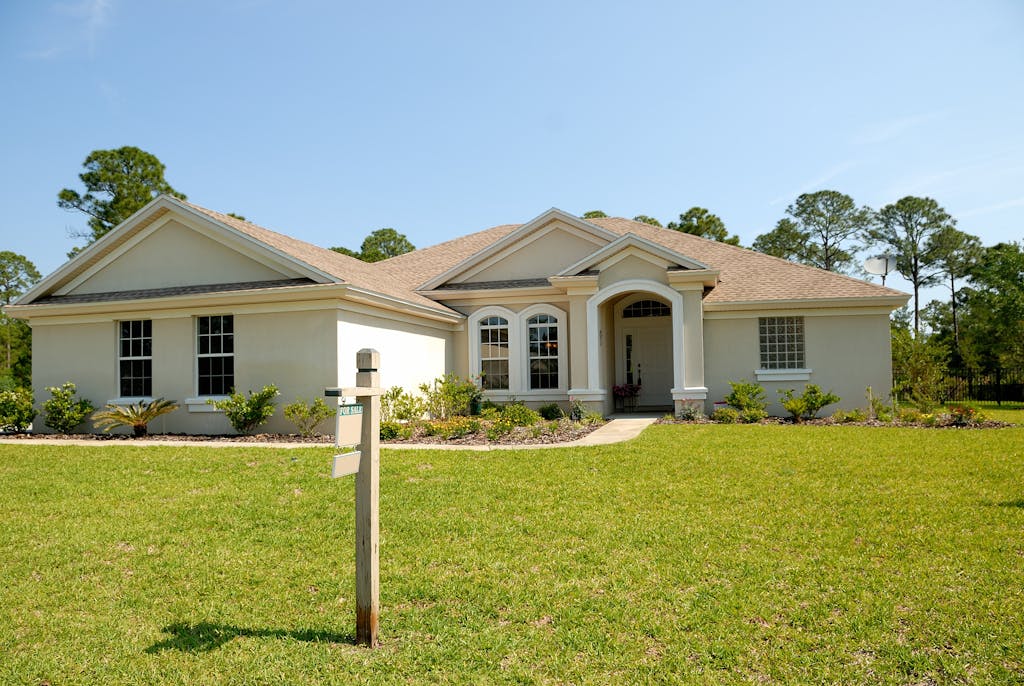
Housing construction activity remained subdued through October 2025, though builder sentiment improved modestly from recent lows. Total housing starts reached 1.307 million units (seasonally adjusted annual rate) in August 2025, the most recent data available, down 8.5% from July’s 1.429 million and 6.0% below August 2024 levels. Single-family starts, accounting for the bulk of lumber consumption, totaled 890,000 units, down 7.0% month-over-month from 957,000 in July.
Building permits—a forward-looking indicator—registered 1.312 million units in August, down 3.7% from July and 11.1% year-over-year. Single-family permits declined 2.2% month-over-month, suggesting continued near-term weakness. First-half 2025 single-family building activity fell approximately 4%, with overall year-to-date housing starts tracking below expectations. Multiple forecasters project 2025 total starts at 1.35 to 1.38 million units, representing just 1-2% growth from 2024’s 1.365 million, far short of the 1.5 to 1.7 million annual pace needed to address the nation’s 3.7 to 4.5 million unit housing deficit.
The NAHB/Wells Fargo Housing Market Index for October 2025 brought encouraging news, rising 5 points to 37 from September’s depressed reading of 32—the highest level since April though still well below the 50 breakeven threshold. More significantly, the Future Sales Expectations component jumped 9 points to 54, marking the first time this subindex exceeded 50 since January 2025 and signaling improving builder optimism about conditions six months ahead. Current sales conditions ticked up 4 points to 38, while traffic of prospective buyers remained anemic at 25, up just 4 points.
Yet affordability constraints continued biting. Mortgage rates settled at 6.27% for 30-year fixed loans as of October 16-21, down from highs near 7.8% in October 2023 but still double the sub-3% rates of 2020-2021. The Federal Reserve’s 0.25% rate cut in mid-September 2025—the first reduction of the year—provided limited immediate relief. ICE Mortgage Monitor calculated that monthly principal and interest payments on the average-priced home reached $2,148, representing 30% of median household income, the best affordability since early 2023 but still 5+ points above long-run historical averages.
NAHB analysis found that 100.6 million households (75% of all U.S. households) cannot afford the median-priced new home of $459,826 at current rates, while 76.4 million households (57%) are priced out of even a $300,000 home requiring $73,000+ in annual income. This affordability crisis explains why 38% of builders cut prices in October (averaging 6% reductions), while 65% offered sales incentives unchanged from September. As NAHB Chairman Carl Harris observed, “Most home buyers are still on the sidelines, waiting for mortgage rates to move lower.”
The renovation and remodeling market provided a bright spot. The Harvard Joint Center for Housing Studies projected $509 billion in R&R spending for 2025, up 1.2% after two years of decline, with the NAHB Remodeling Market Index holding consistently above 50 since Q2 2020. The “lock-in effect”—with 81% of homeowners holding mortgages below 5%—drove homeowners to improve existing properties rather than trade up. However, remodeling uses significantly less lumber per dollar spent than new construction, limiting the sector’s ability to offset weak building activity.
Supply and Demand Fundamentals Point to Tightening
The structural supply-demand imbalance facing North American lumber markets creates the foundation for analysts’ bullish medium-term outlook. U.S. annual lumber production of approximately 35 billion board feet falls far short of the nation’s 50 billion board feet consumption, creating a 15 billion board feet structural deficit filled primarily by Canadian imports (25-30% of total U.S. consumption). With Canadian capacity shrinking and tariffs escalating, this dependency grows increasingly precarious.
Fiber supply constraints compound production challenges. British Columbia faces depleting accessible wood after a decade of heavy cutting, while Western U.S. forests contend with wildfire damage, beetle infestations, and regulatory restrictions. The Trump administration’s March 1, 2025 executive order calling for 25% increased timber production from federal lands faces implementation hurdles from environmental reviews, lawsuits, and workforce shortages. Timber harvest levels in northern states declined 20-35% over the past 25 years, with Maine down 34% from 2007-2020 and New Hampshire falling 35% from 2000-2021, as pulp mill closures eliminated markets for low-grade material.
Just-in-time buying behavior throughout the supply chain eliminated traditional inventory buffers. Dealers maintain lean field inventories after experiencing painful losses during the 2021-2022 price collapse, preferring to risk being “caught short” rather than overstocked. Madison’s Lumber Reporter publisher Keta Kosman noted that “players would rather get caught short of lumber than stock up only to see prices drop,” creating a hand-to-mouth supply chain vulnerable to rapid price swings when demand materializes.
Order files at sawmills reflected this dynamic. Eastern SPF sawmill order files extended into mid- or late-October due to limited supply, while most Southern Yellow Pine mills reported files within two weeks through summer and early fall. Quarterly data showed U.S. production in Q1 2025 at 9.1 billion board feet (down 2.1% YoY) while imports fell 5.1%, with Canadian shipments specifically declining 6.5%. This created what industry sources described as lumber availability dropping to its lowest level since 2019.
Labor shortages further constrain expansion potential. The logging workforce contracted significantly, while sawmill employment at 89,000 represents the lowest level since 2021, down from 93,130 in Q1 2023. Even with sawmills operating at just 64-77% capacity utilization, insufficient workers limit the ability to ramp production when demand recovers. Transportation sector labor shortages add complications, with spring 2025 seeing backlogged shipments and overworked customs agents at the border following tariff implementation.
Natural disaster recovery demand looms as an additional wildcard. California wildfires created rebuilding needs for “millions of board feet,” while Hurricane Helene’s September 2024 damage in Western North Carolina awaits reconstruction. These competing demands strain already tight supplies, potentially triggering renewed price spikes similar to post-disaster patterns seen in previous years.
Regional Markets Display Diverging Trajectories
North American markets dominate global lumber trade, accounting for over 40% of consumption, though regional dynamics vary considerably. U.S. markets experienced the October price surge most acutely, with Midwest and Pacific Northwest regions facing particularly painful cost increases. Southern markets contended with mill curtailments affecting local supply, though Standing Southern Yellow Pine inventory actually increased as growth outpaced harvest, creating longer-term oversupply concerns for that species despite current overall tightness.
Canadian producers confronted existential challenges beyond U.S. tariffs. British Columbia sawmill closures accelerated 10% in 2025, with fiber supply constraints from depleted accessible wood and pest damage limiting recovery prospects. The federal government pledged up to C$1.2 billion in aid to softwood lumber producers in August 2025, recognizing the crisis facing communities dependent on forest industry employment. Chaos erupted at New Brunswick-Maine border crossings in mid-October as new tariff documentation requirements overwhelmed customs operations.
European timber markets struggled with their own pressures. Germany faced severe difficulties from construction slowdowns, high log prices, and oversaturated inventories pushing the sawmill industry toward its lowest production levels in years. Central European production declined as spruce bark beetle salvage operations wound down, driving log prices up by “a euro every week” in some markets. Swedish timber prices saw broad reductions despite tight supplies, while Estonian prices surged due to weather-related supply disruptions.
Yet European producers found opportunity in North American import demand. European softwood lumber exports jumped 48% in January-August 2025 year-over-year, with Sweden and Germany leading the surge, focusing on developing U.S. market share as Canadian supplies tightened. Higher shipping costs and longer lead times limited competitiveness versus Canadian lumber, but tariff differentials provided openings. European exports to China nearly halved in early 2025 as rising production costs and yuan weakness made Asian markets less attractive.
Asian markets presented mixed signals. China’s lumber imports totaled 5.45 million cubic meters in March 2025, down 9% year-over-year, with Q1 2025 volumes falling 13% to 5.84 million cubic meters. The construction sector cooling—representing 45% of direct lumber demand and 40% indirect through furniture and millwork—drove lumber demand down 6% over three years despite government stimulus efforts. Russia supplied 13.67 million cubic meters to China in 2024, accounting for 21.75% of total timber imports, with that share growing as other sources declined.
Japan offered brighter prospects. Green building policies promoting wood use and government support for wood-based construction created opportunities, with European sawmills seeing exports to Japan up 29% as Canadian volumes plummeted 60% between 2017-2023. The Japan Lumber Importers Association projected H1 2025 lumber imports would decline 12.5% overall compared to 2024, but Q4 2023’s 33% surge in Canadian shipments suggested volatility and opportunity as trade patterns shifted.
Industry Consolidation Accelerates with Historic Merger
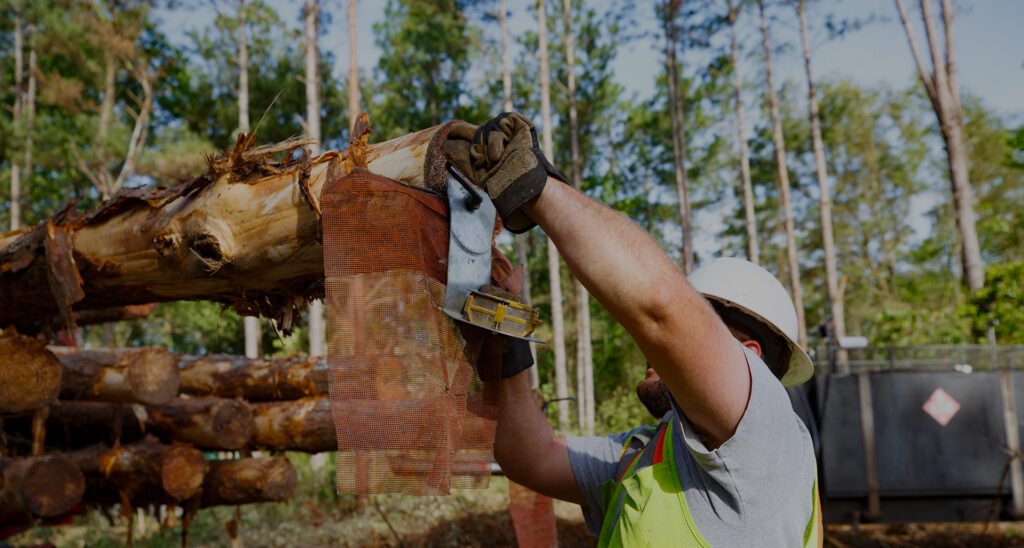
October 14, 2025, brought announcement of the lumber industry’s most significant merger in years: Rayonier and PotlatchDeltic agreed to combine in an $8.2 billion all-stock merger of equals ($7.1 billion equity market cap plus $1.1 billion net debt). PotlatchDeltic shareholders will receive 1.7339 Rayonier shares per share held, representing an 8.25% premium, with Rayonier shareholders owning 54% and PotlatchDeltic 46% of the combined entity.
The merged company becomes the second-largest publicly traded timber and wood products company in North America, controlling 4.2 million acres of timberland—3.2 million acres in the U.S. South and 931,000 acres in the Pacific Northwest—alongside seven wood products facilities with 1.2 billion board feet of annual lumber production capacity. Management projects $40 million in annual run-rate synergies within 24 months of closing, expected in late Q1 or early Q2 2026 pending regulatory approvals and shareholder votes.
Rayonier CEO Mark McHugh will lead the combined company as CEO, while PotlatchDeltic CEO Eric Cremers assumes the Executive Chair role for 24 months to ensure smooth integration. Headquarters will be in Atlanta, maintaining significant operational offices in Wildlight, Florida, and Spokane, Washington. Rayonier declared a $1.40 per share special dividend (25% cash, 75% stock) payable December 12, 2025, to shareholders of record as of November 20.
The strategic rationale emphasizes scale advantages, geographic diversification, and the ability to navigate industry headwinds more effectively. McHugh stated the combination creates “a timber REIT of unparalleled scale and diversity,” positioning the company to capitalize on expected housing market recovery while managing through current volatility. Cremers highlighted the complementary asset bases and enhanced ability to deliver shareholder value through the merger structure.
Additional M&A activity included Canadian forest intelligence leader Remsoft’s October 20 acquisition of Australian forestry tech firm LOGR, expanding Remsoft’s Forest Intelligence Platform with real-time data capture, operational analytics, and blockchain-based chain of custody tracking. Backed by private equity firm Banneker Partners, Remsoft strengthens its Asia-Pacific presence and end-to-end technology capabilities, reflecting broader industry trends toward digital transformation and supply chain transparency.
Major Producers Report Challenging Quarterly Results
West Fraser Timber scheduled Q3 2025 earnings release for October 22 (after market close), with analysts projecting diluted EPS of -$0.76 to -$1.425 on revenue around $1.38 billion—marking continued losses after Q2’s operating loss of $45 million and -$0.38 EPS that missed estimates. The company lowered 2025 guidance for SPF, SYP, and OSB shipments due to softer demand, though it maintained a strong balance sheet with $1.7 billion in available liquidity and $310 million net cash position.
West Fraser declared a quarterly dividend of $0.32 per share payable October 14 and benefits from the industry’s lowest Canadian softwood lumber duty rate at 26.05%, providing competitive advantage over peers facing 35-45%+ rates. The company’s stock traded near 52-week lows entering the earnings announcement, with analyst consensus rating at “Hold.” Its July 2025 partnership with Lake Babine Nation aimed to strengthen British Columbia forest sector relationships amid provincial challenges.
Weyerhaeuser’s Q3 2025 earnings scheduled for October 30 (after market close) faced analyst expectations of -$0.05 per share FFO, down 200% year-over-year. The nation’s largest timberland owner controlling 10.4 million acres and largest lumber manufacturer with 4.5 billion board feet capacity confronted headwinds from seasonal construction decline, lumber demand weakness, and tariff uncertainties. Despite near-term challenges, analysts maintained “Moderate Buy” consensus with average price targets of $32.82, suggesting 31.5% upside potential based on long-term fundamentals.
Interfor Corporation’s October 17 announcement raising Q4 2025 curtailments to 26% (250 million board feet) from previous production of 936 million board feet in Q2 and 910 million in Q3 underscored sector-wide profitability challenges. CEO Fillinger’s statement that “lumber prices in all regions have continued to weaken from already unsustainably low levels” captured the squeeze facing producers as prices through late summer and early fall hovered at or below variable costs for many mills.
Canfor’s 2024 operating loss of $942 million followed by $29 million in Q1 2025 losses drove its South Carolina mill closures eliminating 290 jobs, though Raymond James analysts maintained “Strong Buy” ratings on both Canfor and Interfor, viewing current conditions as unsustainable and positioning both companies as industry standouts when market conditions normalize.
Technical Innovation Advances Amid Market Turbulence
The forestry sector continued embracing technological transformation throughout 2025 despite economic headwinds. Artificial intelligence and big data analytics gained traction for predictive forest management, pest and disease forecasting, and wildfire risk assessment. Satellite monitoring systems provided real-time forest health tracking, carbon stock assessment, and illegal logging detection, with resolution and frequency improving rapidly.
Blockchain traceability solutions addressed supply chain transparency demands, particularly as the European Union’s Deforestation Regulation (EUDR) loomed with delayed implementation now set for January 2026. Chain of custody verification through distributed ledger technology helped companies prepare for compliance requirements, with LOGR’s acquisition by Remsoft highlighting the strategic value of real-time data capture and edockets for tracking timber from stump to end product.
Forestry equipment manufacturers reported that over 60% of new machinery featured eco-friendly components including electric or hybrid powertrains, reducing emissions and operating costs. IoT sensors and telematics enabled real-time equipment monitoring and fleet management optimization. Semi-autonomous harvesters and skidders entered commercial deployment, addressing labor shortage constraints though full autonomy remained years away.
The global forestry equipment market projected 8% growth in 2025, with the overall forestry market expected to expand from $14.9 billion in 2025 to $26.8 billion by 2033 at a 7.65% compound annual growth rate. Cross-laminated timber (CLT) and mass timber products represented the fastest-growing segment, with Europe’s CLT market projected to grow from 1.9 million cubic meters in 2024 to 4.2 million cubic meters by 2033 as tall wood building construction accelerated.
Multiple forestry-focused startups attracted venture capital investment for forest management platforms, carbon credit monitoring systems, AI-enabled reforestation robots, and supply chain SaaS solutions. Natural climate solutions gained prominence as carbon markets matured, increasing timberland appeal as long-term investments combining biological growth returns with carbon sequestration value. Indigenous land management practices gained recognition and integration into sustainable forestry approaches.
Expert Forecasts Point to Significant 2026 Recovery
Forest Economic Advisors’ October 2025 base case forecast projects housing starts recovering to 1.38 million units in 2025 (up 1.3%) then accelerating to 1.50 million in 2026 (up 8.6%), driving lumber consumption growth of 1.2% in 2025 and 4.8% in 2026. The Framing Lumber Composite Index (FLCI) is expected to rise 8% in 2025 from depressed 2024 levels, then surge 16% in 2026 as housing recovery outpaces constrained supply additions (For what it is worth, I think this is overly optimistic).
U.S. softwood lumber consumption in new housing construction is forecast to increase 4.5% to 17.3 billion board feet in 2025, then jump 8.4% to 18.8 billion board feet in 2026. Demand on North American mills specifically rises 1.6% in 2025 and 4.9% in 2026, with the demand-to-capacity ratio tightening from 79% in 2024 to 81% in 2025 and 84% in 2026. Repair and remodeling spending is projected to decline 4.5% in 2025 before recovering 2.1% in 2026.
BMO Capital Markets projects more conservative lumber price averages of $470 per thousand board feet for 2025 and $450 for 2026, reflecting expectations that supply additions will eventually temper price gains. Year-to-date 2025 pricing through September averaged $479, with October month-to-date at $436 before the late-month surge. Fastmarkets forecasts align with FEA’s housing outlook, projecting 4% growth in U.S. starts and 1% R&R spending growth, driving 2-3% consumption increases for lumber, structural panels, and nonstructural panels.
FEA’s alternative tariff scenario assumes Canadian duties jump to 30% by mid-2025 if trade disputes remain unresolved, potentially pushing the FLCI up 21% in 2025 before moderating to 6% gains in 2026 as tariff impacts fully price in. This scenario reflects industry concerns that current conditions represent a temporary price floor, with significant upside risk if supply continues contracting faster than demand.
Critical to all forecasts is the assumption that mills will remain “leery of overproducing the market,” keeping production discipline tight even as demand recovers. Fiber supply constraints in British Columbia, Western U.S., and Europe limit expansion potential regardless of price signals. FEA analyst Kevin Mason notes that price volatility is expected to increase 50-100% from the subdued 2023-2024 levels, cautioning that “it would be a mistake to assume 2025 will be a repeat of the last two years when it comes to prices.”
Trading Economics’ technical models project lumber futures reaching $616.90 per thousand board feet by end of Q4 2025, with 12-month targets of $623.70, supporting the view that October’s surge represents the beginning of sustained recovery rather than temporary spike. Long-term projections through 2030 anticipate the global lumber market growing at 3-5% CAGR, with North America maintaining 40%+ market share while Asia-Pacific grows fastest at 7% CAGR driven by urbanization and infrastructure development.
Critical Factors to Watch Through Year-End
The convergence of structural and cyclical factors creates an unusually wide range of potential outcomes for lumber markets through Q4 2025 and into 2026. Federal Reserve monetary policy stands as the single most important variable, with further rate cuts expected to gradually ease mortgage rates toward 6% and below, unlocking pent-up housing demand. The October NAHB HMI’s future expectations component crossing above 50 for the first time since January signals builders anticipate this easing materializing, though timing remains uncertain.
Canadian tariff evolution represents the second critical uncertainty. The Commerce Department’s seventh administrative review for shipments during calendar 2024 will determine duty rates for 2026-2027, with results expected in late 2026. Potential for negotiated settlement remains, though Canada’s September 2025 strategic withdrawal of certain WTO challenges to pursue broader trade agreements yielded no immediate breakthrough on lumber. Combined rates already exceeding 45% leave Canadian producers with limited additional downside, but any relief would rapidly change competitive dynamics and price trajectories.
Production curtailments appear likely to continue through winter 2025-2026. Interfor, Canfor, West Fraser, and other major producers have signaled willingness to idle capacity rather than sell below cash costs, particularly after suffering massive losses in 2024. The 7% capacity reduction over 2023-2024 already removed substantial supply, but additional temporary curtailments could tighten markets further if demand materializes faster than anticipated. British Columbia faces particularly severe pressure with fiber constraints compounding tariff impacts.
Natural disaster rebuilding demand could materialize rapidly, straining tight supplies. California wildfire recovery requires “millions of board feet,” while Hurricane Helene damage in Western North Carolina awaits reconstruction once insurance proceeds and recovery funding flow. These irregular demand spikes historically trigger sharp price increases in already-tight markets, potentially adding 10-20% to benchmark prices if multiple recovery efforts accelerate simultaneously.
European Union Deforestation Regulation compliance deadlines, now set for January 2026 after political battles shortened the delay from 12 to 6 months, will test global supply chains. Companies must demonstrate timber legality and deforestation-free sourcing, requiring extensive documentation and traceability systems. Implementation challenges could temporarily disrupt trade flows, though most major players began preparation when regulations initially passed.
October 2025 lumber markets reflect an industry at an inflection point—oversupplied with existing inventory yet structurally constrained in production capacity, facing weak current demand yet poised for substantial recovery, and burdened by the highest tariffs in decades yet presenting potential buying opportunities before anticipated 2026 price surges. Industry professionals navigating this complexity must balance immediate cost pressures against medium-term supply constraints, while investors weigh cyclical headwinds against structural housing shortages and disciplined capacity management. The next six months will determine whether October’s price surge marks the beginning of sustained recovery or temporary volatility before further consolidation.

